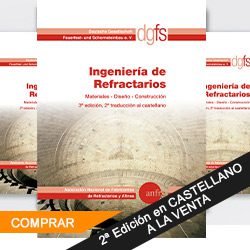Delegates at MagMin heard that declining production and consumption of cement is likely to continue as investment in construction and GDP fails to exhibit anticipated growth. With a number of external factors preventing a rebound in Europe and the cement sector facing environmental pressures, consumption of refractories in the region is likely to remain weak.
Cement production and consumption in Europe has been declining over the last eight years as macroeconomic recovery in the EU continues to be disconnected from the construction cycle, delegates at MagMin 2016 in Dusseldorf, Germany heard this week.
Claude Lorea, deputy chief executive and industrial policy director for CEMBUREAU, the representative organisation of the European cement industry, told delegates that the production of cement has seen a 41% decline in the EU since 2007, while production from CEMBUREAU has seen a fall of 27%.
Consumption has also seen a decline, with compound annual growth rate (CAGR) from 2000 to 2014 contracting; down 0.9% for France; 2% in Germany; down 4.5% in Italy; 8.7% for Spain; and down 1.4% in the UK, although Euroconstruct forecasts show a potential increase of 3.5% in 2016 for the EU-28.
As a result, in recent years, cement exports have outperformed imports for EU-28, Lorea said.
Around 60-70% of the world’s refractories output is destined for the steel making sector, although other markets such as cement, iron, glass and non-ferrous metals production consume a large portion of production.
A number of refractory mineral suppliers, particularly in China, have reported declining prices and sales volumes in Q1 as a result of weak demand in the steel and cement markets.
Eurozone construction confidence and activity
2014 production in the EU-28 stood at 159m tonnes, while Chinese cement production totalled 2.4bn tonnes. Return on capital employed (ROCE) was believe the cost of capital impact investment and growth in Europe.
«In the short term macroeconomic picture, UK, Germany and France all have higher GDP than the EU-28 average, while Italy and Spain are below the EU-28 average GDP, but Italy is stable and Spain is increasing,» Lorea said.
In terms of CEMBUREAU’s economic outlook for 2016, Lorea said there are some positive external factors such as; the ECB’s Asset Purchase Programme, labelled as «Quantitative Easing» extended until March 2017; oil prices at record lows – down by 69.3% in nominal terms since June 2014; EU/USD exchange rate down towards the parity: -20% EUR depreciation since 2014 benefits exports.
However, she added that that there were a number of potential negative factors that could affect the cement sector.
Among these are the slowdown in Chinese GDP growth, the decline in exports and global trade due to the recession in many emerging and oil producing countries such as Brazil and Russia, and due to plummeting revenues from oil and other commodities.
Lorea also noted that the «oil price bonanza» was leading to serious sustainability issues for producing countries and was likely to become a destabilising factor.
«In the EU, there is also the ineffectiveness of hyper-expansionary monetary policy,» she added, referring to deflation, i.e. the Harmonised Index of Consumer Prices (HICP) y-o-y growth rate, which is already negative in the Euro area, down 0.3% in February 2016, after insufficient investment recovery.
Other potential impacts on the construction sector, and as a result cement consumption, is political instability, such as IS-driven turmoil in the Middle East, a possible exit by the UK from the European Union, and the refugee crisis.
«Although this resulted in lowered GDP forecasts and a real construction investment growth rate of only 1.7% in the EU-28, forecasts for 2016 and 2017 have increased to growth of 2.2% and 3.6% respectively. US forecasts expect construction investment to decrease from growth of 4.8% in 2015 to 4.5% in 2016 and 2017 while the EU-28 real construction output is also expected to grow 3% and 2.7% respectively in the next two years,» Lorea said.
Cement sector challenges
As focus on reducing carbon emissions and ensuring sustainable operations increases, the cement industry in Europe is likely to face more pressure than in other areas.
EU net CO2 emissions per tonne for grey clinker have reduced from 900kg in 1990 to 750kg in 2013, while the world level is still as high as 812kg, Lorea told delegates.
The low carbon roadmap also commands a 32% CO2 reduction by 2050 from 1990 and 80% with carbon capture.
Lorea added that cement is also the key to circular economy because 36% of primary fuels in kilns can be replaced by alternative fuels, saving 16m tonnes in CO2 each year. «Even primary raw materials are being replaced by alternatives with material recycling.»



